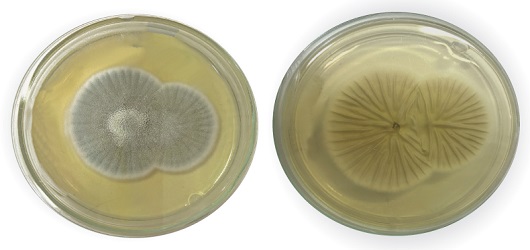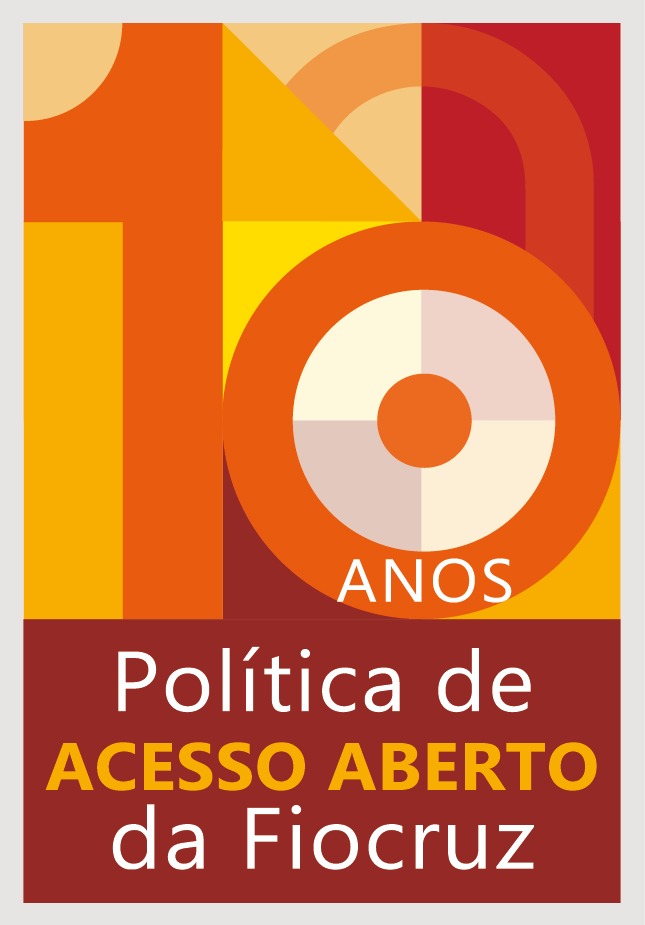Brazil has the first report of meningoencephalitis caused by the fungus 'Penicillium chrysogenum'
30/12/2022
Max Gomes (IOC/Fiocruz)
An article led by the Oswaldo Cruz Institute (IOC/Fiocruz) reported the first case in Brazil of meningoencephalitis caused by the fungus Penicillium chrysogenum. Rarely pointed out as an etiological agent of diseases in humans, the microorganism caused severe infection in a patient’s brain and meninges in the city of Rio de Janeiro, leading to her death. The report was published in the International Journal of Infectious Diseases.
'P. chrysogenum' after seven days of culture. On the left, the front of the microorganism, while the image on the right shows its reverse (Photo: Disclosure)
The case was followed at Hospital Naval Marcílio Dias, in the North Zone of Rio de Janeiro's capital. A 14-year-old teenager was admitted to the medical center with headaches, photophobia, and vomiting. According to the exams, the girl had no comorbidities and appeared to have full capacity to react against pathogenic microorganisms. The fungus presence was observed in analyses of the cerebrospinal fluid - the substance that surrounds the brain and spinal cord. The samples were sent for thorough taxonomic identification in the Laboratory of Taxonomy, Biochemistry and Bioprospecting of Fungi at the IOC. Using phenotypic methodologies, which involve taxonomic characterization, and molecular techniques, it was confirmed that the fungus found belonged to the species Penicillium chrysogenum.
“Meningoencephalitis is commonly associated with infections caused by bacteria or fungi of the genus Cryptococcus. It was astonishing to identify that this case was related to the Penicillium, and of a species that had not yet been described in the country as causing this disease”, highlights Manoel Marques Evangelista de Oliveira, a researcher at the IOC Laboratory and the article coordinator.
With the confirmation, the doctors at Marcílio Dias started treating the young woman with two classes of antifungal medications. Despite the best efforts, the patient died of septic and neurogenic shock. “The severity of this case concerns us because it occurred primarily in an immunocompetent patient, as it may mean that P. chrysogenum has an immune response escape profile. The case could have had an even faster and more complicated evolution in patients with compromised immunity, such as people with HIV/Aids or those under treatment for CO VID-19," explains Oliveira.
For the researcher, the finding demonstrates the need for rapid and accurate identification of etiologic agents and the importance of expanding studies about pathogenic fungi. “Our article serves as an alert for doctors to consider fungi more constantly in their diagnoses, as was done by the Hospital Naval Marcílio Dias. Just like viruses and bacteria, fungi can cause various diseases. However, as they are not very well remembered, many cases are treated late or go unnoticed,” concludes Oliveira.
How the patient was infected with P. chrysogenum was not evident. Although the fungus is widely distributed in the environment, it is mostly found in soils where there is decaying matter, sewage runoff, and construction sites.
New cases of fungal infections
The publication also highlights a recent increase in fungal infection incidence in the human Central Nervous System. Among the main syndromes triggered by the infection are meningitis, encephalitis, and increased intracranial pressure. “This increase is related to the growth, in the last two decades, of the number of immunosuppressed people, that is, people with low immunity. The reasons are diverse: people living with HIV/Aids, indiscriminate medication use, depression cases and, more recently, COVID-19. These individuals are prone to get fungal infections”, explains Oliveira.
Most occurrences are related to the genus Cryptococcus species, which causes meningitis. Infection usually occurs by inhaling spores in soil dust contaminated with pigeon droppings. “The fungi that cause cryptococcosis are widespread in the world. But there is also another factor that contributes to the large number of cases reported: the ease of diagnosis. Unlike most fungal infections, there are rapid tests to identify the Cryptococcus species, which allows a faster diagnosis to be made without the need to call a mycology laboratory”, says the researcher.
However, the researcher believes that the number may be even higher. “Cases may just be being underreported because there is a lack of specialized professionals in the area. It is important that there is a constant exchange between mycology laboratories and hospitals”, he says.
Another factor stressed is the fungi changing behavior due to climate change. According to the researcher, the fungi may be adapting to the new environmental conditions, and many of them are able to withstand temperatures close to that of the human body, which becomes a host to these microorganisms.
“Fungi have escape mechanisms for this temperature issue, adapting to survive in hostile environments. Therefore, climate changes can also lead to an increase in fungal diseases in humans”, he says.
Collaboration:
Since its creation, the century-old Laboratory of Taxonomy, Biochemistry and Bioprospecting of Fungi at the IOC (formerly called the Laboratory of Mycology) has collaborated with several national and foreign institutions in the understanding of fungi. Currently, the laboratory - one of the few specialized in fungal taxonomy - provides services in species identification and authentication, as well as the development of research associated with assistance.


